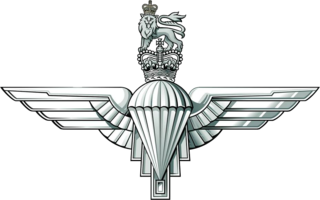
The Parachute Regiment, colloquially known as the Paras, is the airborne and elite infantry regiment of the British Army. The first battalion is part of the Special Forces Support Group under the operational command of the Director Special Forces. The other battalions are the parachute infantry component of the British Army's rapid response formation, 16 Air Assault Brigade. The Paras, along with the Guards, are the only line infantry regiment of the British Army that has not been amalgamated with another unit since the end of the Second World War.

The 4th Canadian Armoured Brigade was an armoured brigade of the Canadian Army during World War II. It was part of the 4th Canadian (Armoured) Division.
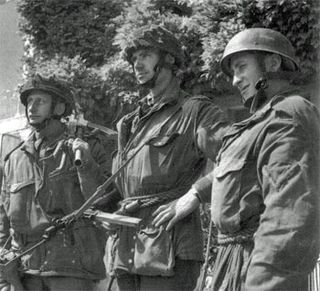
The 6th Airborne Division was an airborne infantry division of the British Army during the Second World War. Despite its name, the 6th was actually the second of two airborne divisions raised by the British Army during the war, the other being the 1st Airborne Division. The 6th Airborne Division was formed in the Second World War, in mid-1943, and was commanded by Major-General Richard N. Gale. The division consisted of the 3rd and 5th Parachute Brigades along with the 6th Airlanding Brigade and supporting units.
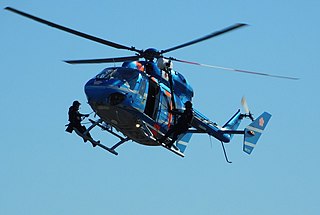
A rapid reaction force / rapid response force (RRF), quick reaction force / quick response force (QRF), immediate reaction force (IRF), rapid deployment force (RDF), or quick maneuver force (QMF) is a military or police unit capable of responding to emergencies in a very short time frame.
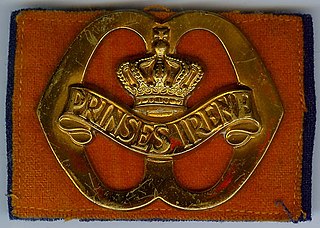
The Princess Irene Fusiliers Guards Regiment is a regiment of the Royal Netherlands Army, named after Princess Irene, the Granddaughter of Queen Wilhelmina, daughter of Queen Juliana, sister of Princess Beatrix and aunt of King Willem-Alexander. It is one of two regiments, along with the Garderegiment Grenadiers en Jagers, to be classed as 'Guards'.

The Royal Netherlands East Indies Army was the military force maintained by the Kingdom of the Netherlands in its colony of the Dutch East Indies, in areas that are now part of Indonesia. The KNIL's air arm was the Royal Netherlands East Indies Army Air Force. Elements of the Royal Netherlands Navy and Government Navy were also stationed in the Netherlands East Indies.

The British Commonwealth Occupation Force (BCOF) was the British Commonwealth taskforce consisting of Australian, British, Indian and New Zealand military forces in occupied Japan, from 1946 until the end of occupation in 1952.

The Battle of Balikpapan was the concluding stage of Operation Oboe, the campaign to liberate Japanese-held British and Dutch Borneo. The landings took place on 1 July 1945. The Australian 7th Division, composed of the 18th, 21st and 25th Infantry Brigades, with a small number of Netherlands East Indies KNIL troops, made an amphibious landing, codenamed Operation Oboe Two, a few miles north of Balikpapan. The Allied invasion fleet consisted of around 100 ships. The landing had been preceded by heavy bombing and shelling by Australian and US air and naval forces. The Allied force totalled 33,000 personnel and was commanded by Major General Edward Milford, while the Japanese force, commanded by Rear Admiral Michiaki Kamada, numbered between 8,400 and 10,000, of which between 3,100 and 3,900 were combatants. After the initial landing, the Allies secured the town and its port, and then advanced along the coast and into the hinterland, capturing the two Japanese airfields. Major combat operations concluded around 21 July, but were followed by mopping-up operations, which lasted until the end of the war in mid-August. Australian troops remained in the area until early 1946.
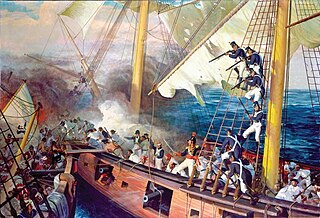
Marines are soldiers who primarily operate in littoral zones, both on land and at sea. Historically, the main tasks undertaken by marines have included raiding ashore in support of naval objectives, and the boarding of vessels during combat or capture of prize ships. Marines also help maintain discipline and order aboard the ship. In most countries, marines are an integral part of that state's navy.

The 5th Parachute Brigade was an airborne forces formation of brigade strength, raised by the British Army during the Second World War. Created during 1943, the brigade was assigned to the 6th Airborne Division, serving alongside the 3rd Parachute Brigade and the 6th Airlanding Brigade.

The Mobile Brigade Corps abbreviated Brimob is the special operations, paramilitary, and tactical unit of the Indonesian National Police (Polri). It is one of the oldest existing units within Polri. Some of its main duties are counter-terrorism, riot control, high-risk law enforcement where the use of firearms are present, search and rescue, hostage rescue, and bomb disposal operations. The Mobile Brigade Corps is a large component of the Indonesian National Police trained for counter-separatist and counter-insurgency duties, often in conjunction with military operations.
The 159th Infantry Brigade was an infantry brigade of the British Army. Part of the Territorial Army (TA), the brigade was assigned to the 53rd (Welsh) Infantry Division and served with the division in the early stages of the Second World War until May 1942 when it was transferred to be the motorised infantry element of the 11th Armoured Division. The brigade would serve with the 11th Armoured in North-west Europe from June 1944 to May 1945.
The 37th Indian Infantry Brigade was an Infantry formation of the Indian Army during the Second World War. It was formed in June 1941, at Quetta in India and assigned to the 14th Indian Infantry Division. The brigade was then assigned to the 23rd Indian Infantry Division in June 1942. It remained with the 23rd Division apart from an attachment to the 17th Indian Infantry Division between March and April 1944.

The First Division "7 December" was a division of the Royal Netherlands Army, active from at least 1946 to 2004. It was sent to Indonesia in 1946 to restore "peace, order and security" after the proclamation of Indonesian Independence in 1945.

Suharto was the second President of Indonesia, having held the office for 31 years from 1967 following Sukarno's removal until his resignation in 1998.
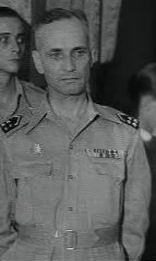
Major-general Dirk Reinhard Adelbert van Langen was a member of the Chief of Staff of the Royal Netherlands East Indies Army the Territorial Commander of East-Java and commander of the T-Brigade during the Indonesian War of Independence of the Royal Netherlands East Indies Army in the Dutch East Indies, from 1946 to 1949, during the Indonesian National Revolution.
The Battle of Margarana was fought between the Netherlands Indies Civil Administration (NICA) and the recently created, rebelling Ciung Wanara Battalion that occurred in Marga, in Bali Indonesia.
The Mariniersbrigade was a marine unit set up by the Dutch government-in-exile during World War II, which existed between 1943 and 1949. It was formed as part of the Dutch contribution to the Allied war effort against Japan and more particularly for the liberation of the Dutch East Indies. The driving force behind its creation was marine colonel M. R. de Bruyne. The Mariniersbrigade became an independently operating unit with a strength of approximately 5,000 men. Capable of amphibious landings, the unit had a core of three infantry battalions, and was further equipped with landing craft, artillery and tanks.

In order to contain the violence in the Dutch East Indies after the Japanese capitulation in 1945 and to restore colonial order, the Netherlands sent battalions of Oorlogsvrijwilligers to the colony. They were recruited in 1944 and 1945, mostly in the southern provinces of the Netherlands, and initially intended for deployment in Europe. Others had signed up for the fight against Japan in the summer of 1945.

The 1st Battalion, Sindh Regiment is an infantry battalion of the Sindh Regiment of the Pakistan Army.

















